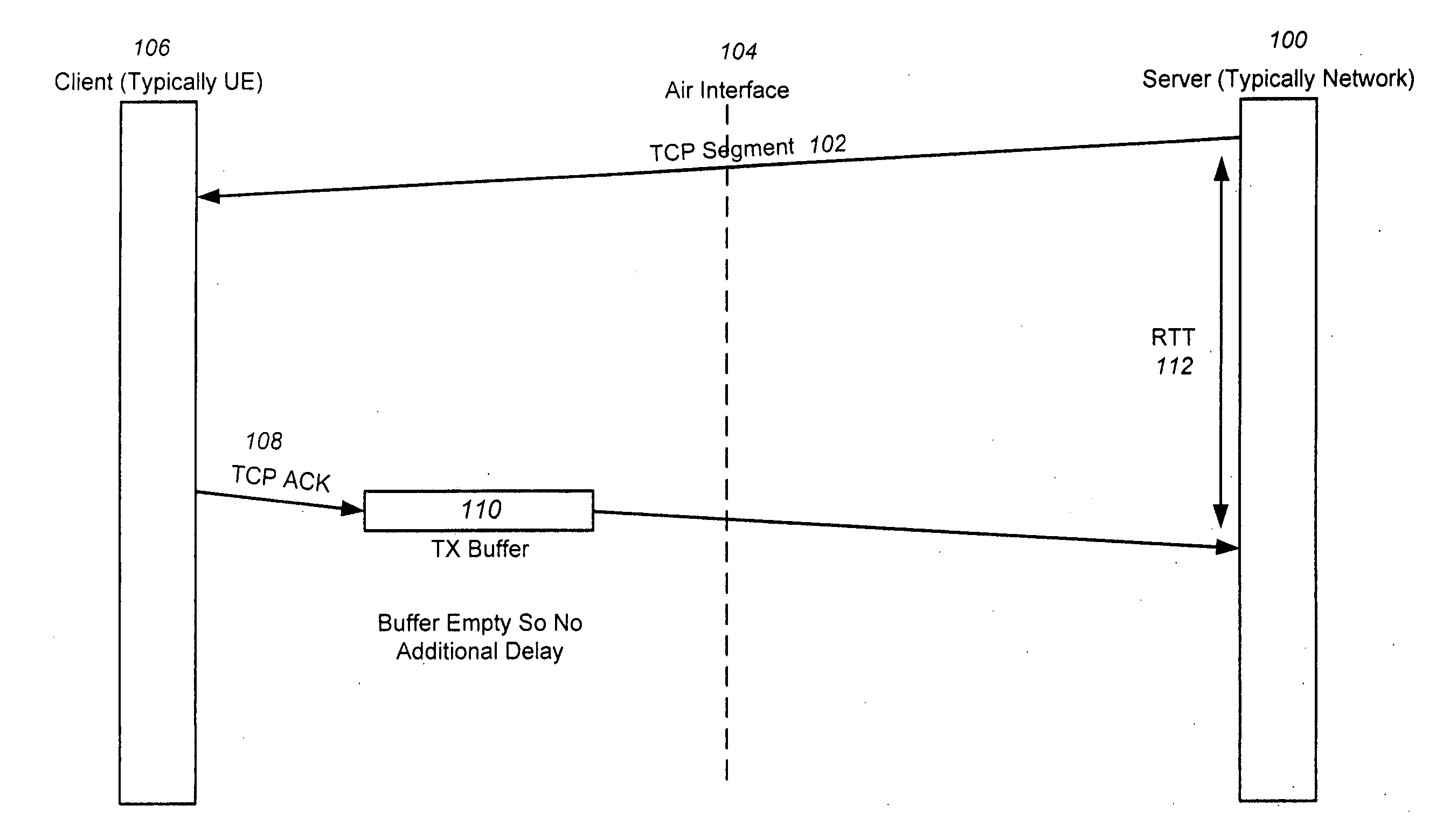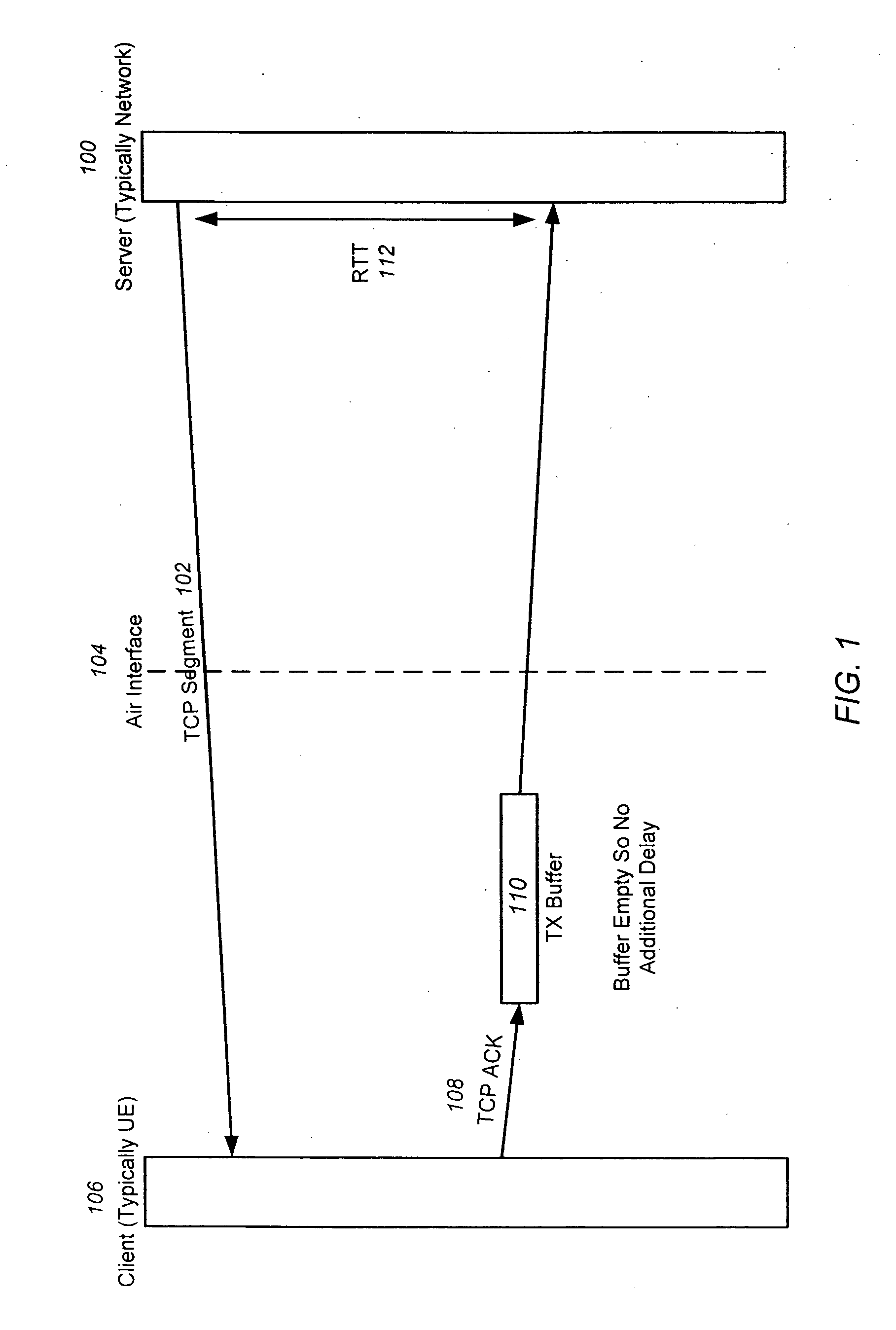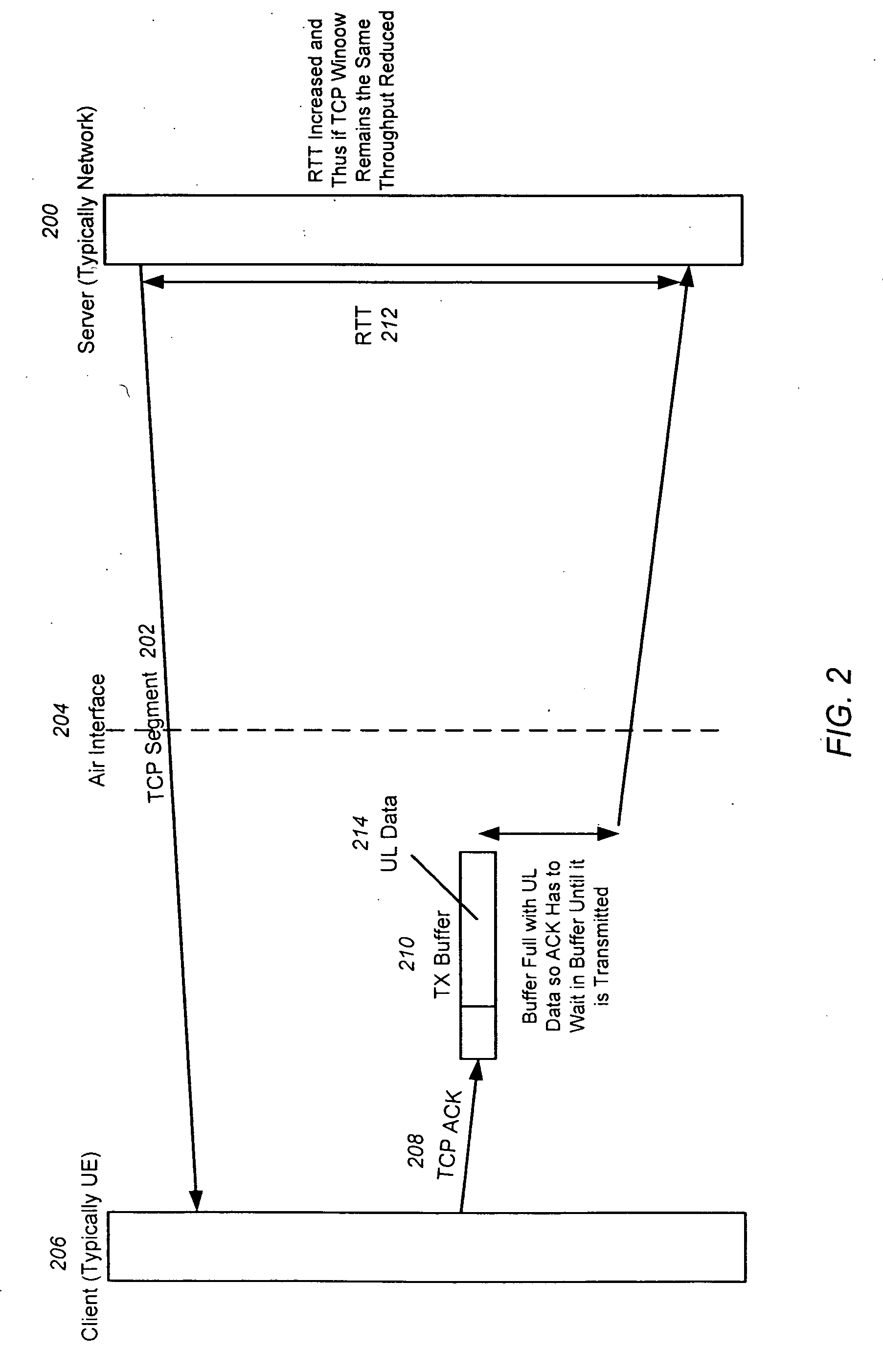Efficient TCP ACK prioritization in wireless networks
a wireless network and ack prioritization technology, applied in error prevention, digital transmission, electrical equipment, etc., can solve the problems of limiting the overall amount of unacknowledged data the sender transmits, affecting the rtt of the ack for the tcp link in the downlink (dl), and not being practicable to send a single packet of data, etc., to achieve the effect of increasing the priority of acks
- Summary
- Abstract
- Description
- Claims
- Application Information
AI Technical Summary
Benefits of technology
Problems solved by technology
Method used
Image
Examples
Embodiment Construction
[0019]Embodiments of the invention expand upon conventional ACK prioritization by providing ACKs with a lower block error rate (BLER) (as opposed to data) over the air interface, providing a separate radio bearer for ACKs and data, and successively increasing the priority of ACKs for each retransmission required.
[0020]FIG. 3 illustrates an exemplary wireless communications system 300 including additional ACK prioritization schemes according to embodiments of the invention. The wireless communication system 300 may comprise, but is not limited to, a packet data implementation of the international 3GPP Universal Mobile Telecommunications System (UMTS) standard. On the client or UE side, a processing device such as a personal computer (PC) 302 may be coupled to a communications interface apparatus such as a UE 304 through a connection such as a USB 306. The UE 304 may in one embodiment be a Personal Computer Memory Card International Association (PCMCIA) card capable of being into a PC...
PUM
 Login to View More
Login to View More Abstract
Description
Claims
Application Information
 Login to View More
Login to View More - R&D
- Intellectual Property
- Life Sciences
- Materials
- Tech Scout
- Unparalleled Data Quality
- Higher Quality Content
- 60% Fewer Hallucinations
Browse by: Latest US Patents, China's latest patents, Technical Efficacy Thesaurus, Application Domain, Technology Topic, Popular Technical Reports.
© 2025 PatSnap. All rights reserved.Legal|Privacy policy|Modern Slavery Act Transparency Statement|Sitemap|About US| Contact US: help@patsnap.com



